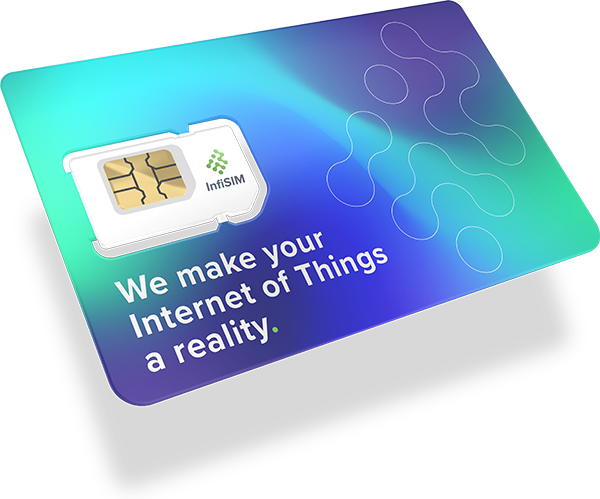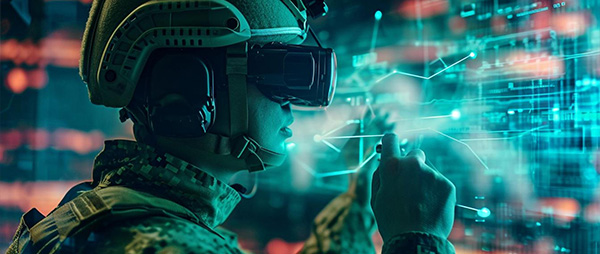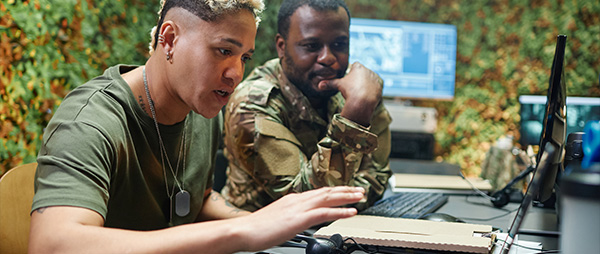IoT is changing the landscape of modern warfare.
IoT in the military & armed forces
The transformative role of IoT in the military
The integration of the Internet of Things (IoT) into military operations has revolutionised global defence strategies. IoT, a synergy of interconnected devices sharing data, significantly enhances an armed force’s efficiency, security, and tactical response.
Occasionally referred to as the Internet of Battlefield Things (IoBT), its use in defence involves sensors and automated systems crucial for data-driven decision-making, situational awareness, and rapid responses in critical situations.
IoT plays a crucial role in modern warfare, providing a strategic advantage in dynamic combat situations. This technological and strategic integration creates a networked battlefield, elevating operational capabilities and resource management, and reducing crucial response times.
Smart military bases
Smart military bases represent a significant leap in securing and managing military installations. Using IoT for security involves integrating biometric data and fingerprinting to accurately identify military personnel. This smart technology helps reduce the risk of unauthorised access by allowing only verified individuals to enter sensitive areas. Adopting these advanced identification methods significantly enhances base security beyond traditional methods.
 IoT sensors: A new era of efficiency
IoT sensors: A new era of efficiency

The deployment of IoT connected sensors across military bases transforms how entire forces are managed. These sensors contribute to more intelligent, more efficient, and smarter management of essential resources, leading to a significant reduction in waste and an increase in operational efficiency. This optimisation is vital in isolated military bases where resource management is crucial.
 Improving services & performance
Improving services & performance

IoT technologies in military bases aim to improve the overall performance and convenience of military operations. They help streamline processes, thus allowing military personnel to focus on mission-critical tasks. The data collected from these IoT devices can also be used to make informed decisions in key areas such as scheduling, further enhancing the efficiency and effectiveness of military base operations.
Tactical edge computing in military operations
Tactical edge computing represents a ground-breaking shift in military technology. This approach involves decentralised cloud computing, enabling military units to operate independently of centralised networks. Such autonomy is especially crucial in geographically remote areas where traditional communication is unreliable or unavailable.
Augmented intelligence on the frontlines
One of the most futuristic advantages of tactical edge computing is its ability to provide augmented machine intelligence to soldiers in the field. This technology empowers field teams and first responders by offering real-time performance for data processing. It aids in critical functions such as threat assessment and response, ensuring soldiers have the most current and relevant information to hand. This immediacy of data processing can be life-saving in combat scenarios.
Asset tracking & inventory management
In the military, the efficient tracking and management of assets are critical for operational success. IoT technologies, especially RFID tags and similar devices, have transformed asset management. These technologies enable real-time tracking of equipment and supplies, significantly reducing the risk of loss or theft. This capability ensures that military operations are well-equipped and logistical issues are minimised.
IoT in military healthcare
The advent of wearable IoT devices has revolutionised healthcare in the military. These devices, worn by soldiers, are equipped to monitor vital health indicators such as heart rate and body temperature. This real-time health monitoring is crucial in a military setting, where rapid response to medical emergencies can be the difference between life and death.
Enhancing soldier safety & medical response
The data collected from these wearable devices goes beyond essential health monitoring. It provides insights into:
This proactive approach to healthcare ensures that soldiers can be supported better and are always in optimal condition for duty. In the event of injuries or health emergencies, the immediate availability of health data allows for quicker and more effective medical intervention.
Innovating military medical practices
IoT in military healthcare is not just about individual soldier monitoring; it’s about transforming medical practices on the battlefield. These technologies enable the establishment of mobile, connected medical facilities that deliver high-quality care in a wide range of environments.
Smart weaponry
IoT is influencing the development of various weaponry systems. These systems are designed to be more intelligent, responsive, and interconnected. For example, weapon platforms equipped with IoT sensors can communicate with other military assets, providing a more coordinated and efficient approach to combat operations. This interconnectedness enhances the effectiveness of individual weapons systems and contributes to a more synchronised and strategic use of military force.
Autonomous weapons & systems
The integration of IoT in military technology has enabled the development and deployment of autonomous weapons and systems. These systems, including drones and unmanned ground vehicles (UGVs), are revolutionising military operations by providing new capabilities in areas where human presence is risky or impractical.
Applications in surveillance & reconnaissance
One of the primary roles of autonomous military systems is surveillance and reconnaissance. Drones equipped with advanced sensors and communication systems gather crucial intelligence from the battlefield without endangering human lives. These systems can operate in various environments, providing the real-time data that is essential for strategic planning during military operations.
The future implications of autonomous weapons and systems in military operations are significant. These technologies promise to transform the nature of combat, allowing for more precise and targeted operations. As these systems become more advanced, they will likely play an increasingly central role in military strategy, thus changing the dynamics of warfare as we know it.
Advancements in military wearables
Enhancements in soldier performance & protection
One notable development in military wearables is the exoskeleton. Systems such as Lockheed Martin’s ONYX exoskeleton are designed to augment soldiers’ physical strength and endurance. These wearable devices enhance the soldier’s physical capabilities and improve orthopaedic alignment, leading to better weight distribution and reduced risk of injury.
Another innovation is the development of smart helmets. Projects including Rice University’s Smart Helmet are pushing the boundaries of wearable technology. These helmets, enhanced with nanomaterials and advanced sensors, are designed to be lightweight whilst offering robust protection and functionality. Features such as integrated lenses and improved communication capabilities are set to transform the standard soldier’s gear into a multifunctional toolkit.
Challenges & future perspectives
Several challenges arise as the military continues integrating IoT into its operations. These include cybersecurity threats, the need for robust and reliable technology, and the management of data generated by IoT devices. Additionally, the technology must be reliable and durable to withstand the harsh conditions of military environments.
Why use InfiSIM for your IoT SIMs?
InfiSIM are one of the most reputable IoT SIM card providers with hundreds of thousands of SIMs deployed globally. We have UK-based support and fantastic reviews, so you can be sure that your business is in safe hands.




